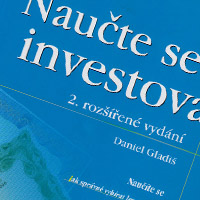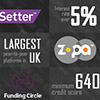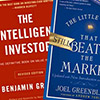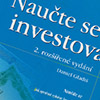Learn to Invest by Daniel Gladis: 6 screening criteria tips to find undervalued stocks
Gladis’s approach to investment is inspired by the the investment philosophy of Benjamin Graham (which in turn has been a lifelong inspiration for Warren Buffett). Graham’s investment model utilises a technical analysis of stocks - supported by historical data - and strives to eliminate speculative ideas and conjecture which may affect an investor's decisions
Value screening by Daniel Gladis
The value screening process designed by Daniel Gladis is based upon six clearly defined criteria and their recommended values, which I outline below. The core aim of the screening process is to identify companies that are undervalued and eliminate small companies with a market capitalisation under $500 millions. For example: the screening process should discover firms with unstable profitability, or companies with high debt or low liquidity. Furthermore, the screening process helps exclude companies that don't pay dividends or are trading at high multiples of equity or net profits.
Criterion no. 1: Low Price to Earnings ratio
The Price to Earnings ratio (henceforth P/E ratio) is one of most widely used ratios for valuing a company by investors. The P/E ratio measures a company’s current share price relative to its earnings per share.
Gladis suggests looking for companies with a P/E of 15 or lower. This is because this ratio indicates to investors how many dollars they can expect to have to invest into a firm to get back a dollar from that organisation’s earnings
The quicker the profits of a company grows, the higher proportion of the existing profits we are happy to pay.
For instance: if a company is currently traded with P/E = 15, the interpretation is that investors are willing to pay £15 for every £1 of current earnings.
Criterion no. 2: Price to Book ratio
The Price to Book ratio (henceforth P/B ratio) is a financial indicator used to compare a company's book value to the current market price of a share. (Note: the book value of the equity of the company is the difference between the book value of assets and the book value of liabilities.
According to Gladis’s screening criteria: the P/B ratio should not exceed 1.5. While it is quite obviously a good idea to buy a company that is cheaper than its book value, Gladis argues it is more important to set an upper limit for investment. He sets his upper limits at a company's P/B value equal to 1.5 (i.e. 1.5 times the book value of the company).
Alternatively, it is also possible to replace the first and the second criteria by a single criterion: the multiplication of a company’s P/E and P/B should not exceed 22.5. In other words: a P/B value lower than 1.5 can compensate for the higher value of P/E (more than 15) and vice versa.
Criterion no. 3: Uninterrupted history of paying out dividends
For Gladis a company’s dividend policy is absolutely key. A good company should have an uninterrupted history of paying out dividends for at least 10 years. He believes that shareholders should monitor a company's dividend policy very closely as well as the way retained earnings are invested. Dividend policy can also reveal the state of a company, the quality of its management and its relationship to its shareholders
Criterion no. 4: Financially healthy company
We consider a company to be financially healthy when it is sufficiently liquid and has a reasonable debt. To apply the fourth criteria there are these two ratios we can use: current ratio - to measure liquidity - and debt to equity ratio to measure debt.
Current ratio is defined as the ratio between current assets (cash and equivalents; inventories and receivables due within one year) and current liabilities (liabilities of the company due within one year). To be considered liquid, the company must have its current assets greater than its current liabilities. As per Gladis's advice, the ratio between assets and liabilities should be at least two, i.e. current ratio with a minimum value of 2.
A company's with debt that is too high may risk folding or could see an increase in the volatility of its profits.
On the other hand, a company that has adequate debt and regularly decreases it, is probably driven by a quality management that knows how to work with debt. Therefore, we should look for companies that don’t have debt to equity ratio higher than 0.6. Although in a utility industry (i.e. electricity suppliers, gas suppliers, etc.) we can tolerate a debt to equity ratio up to 1
Criterion no. 5: Stable and growing profits
A company is considered as profit-stable if earnings during the last five years amounted to at least 4% growth (it roughly corresponds to the nominal growth of the economy). If the earnings were rising for an even longer period than that, such as the past 10 years, then that is even better. The successes of previous years, whilst not a guarantee of future earnings, used in conjunction with other criteria could be a very good signal for potential investors.
Criterion no. 6: Market capitalization
According to Gladis, part of his six criteria is that the company should be of a minimal size - which in finance we call Market capitalisation. However, with the same breath he adds that this matter of size is a very subjective view for each investor and individual and will depend on their approach to risk. Based on his own experience, the author recommends investing in companies with market capitalisation of $500M and higher (i.e. approximately £350M). At the same time, he doesn't warn against investing in smaller companies, but stresses that due caution should be used.
Drawing on historical data, there is evidence that larger companies are much more stable and possess less risk (i.e. large capitalisation). Conversely, smaller companies (i.e. small capitalisation) are more volatile and therefore may produce higher yields but come with a higher risk.
Value screening by Daniel Gladis in brief
To conclude, let's recap and summarise each rule and show how it can be used as a template for a basic screening process:
- 1) Price to Earnings ratio (P/E) <=15
- 2) Price to Book ratio or (P/B) <=1.5
- 3) Financially healthy company : Current ratio >=2 & Debt to equity ratio <= 0.6
- 4) Market capitalization >=£ 350M
The Company (ideally either FTSE 100 or FTSE 250) that meets these criteria can be filtered by using the Advanced Fundamentals Search form on ADVFN.com. But in order to adhere to the above criteria its required to manually evaluate all companies that have passed through this sieve in addition to the above:
- 5) Earnings of company during the last five years must be growing by at least 4%
- 6) Uninterrupted history of paid dividends for at least 10 years. This point is partly included in the screening criteria too. I used the dividends yield > 0. This rule helps to select companies that are currently paying out dividends.
To use these steps in isolation without any other method or technique would not suffice. Any experienced investor would not use them solely to make a decision on buying or selling. It does help to a certain level, but it is important to further investigate each company. For example: check their financial statements, activity, position and market prospects, quality of management and of course calculate the intrinsic value of the shares and the safety margin.
Bottom line
It is important to say that Gladis’s book, Learn to Invest, which we have drawn on here, was written more than 10 years ago. A decade is a long time and during that period there have been many significant economic and financial developments and events (such as the 2008 crisis). And, in general, change in the world around us is accelerating thanks to new technologies and increasing globalisation. These (and not only these) happenings have influenced, reshaped and amended the strategies of many investors and Gladis is no exception.
If we followed Gladis’s strict rules now, it would be very difficult for us to find a large choice of strong companies. This is not because the criteria used is bad, but because it would produce only a small selection of firms. Each of us is willing to tolerate different levels of risk when investing, or an enhanced emphasis on a particular criterion by which you can then modify your individual rules. For me, for instance, I prefer to look for companies in the £50m to £950m size range.
I hope that this summary of Gladis’s criteria helps you shape and create your own screening strategy for investment. I wish you the very best success.








